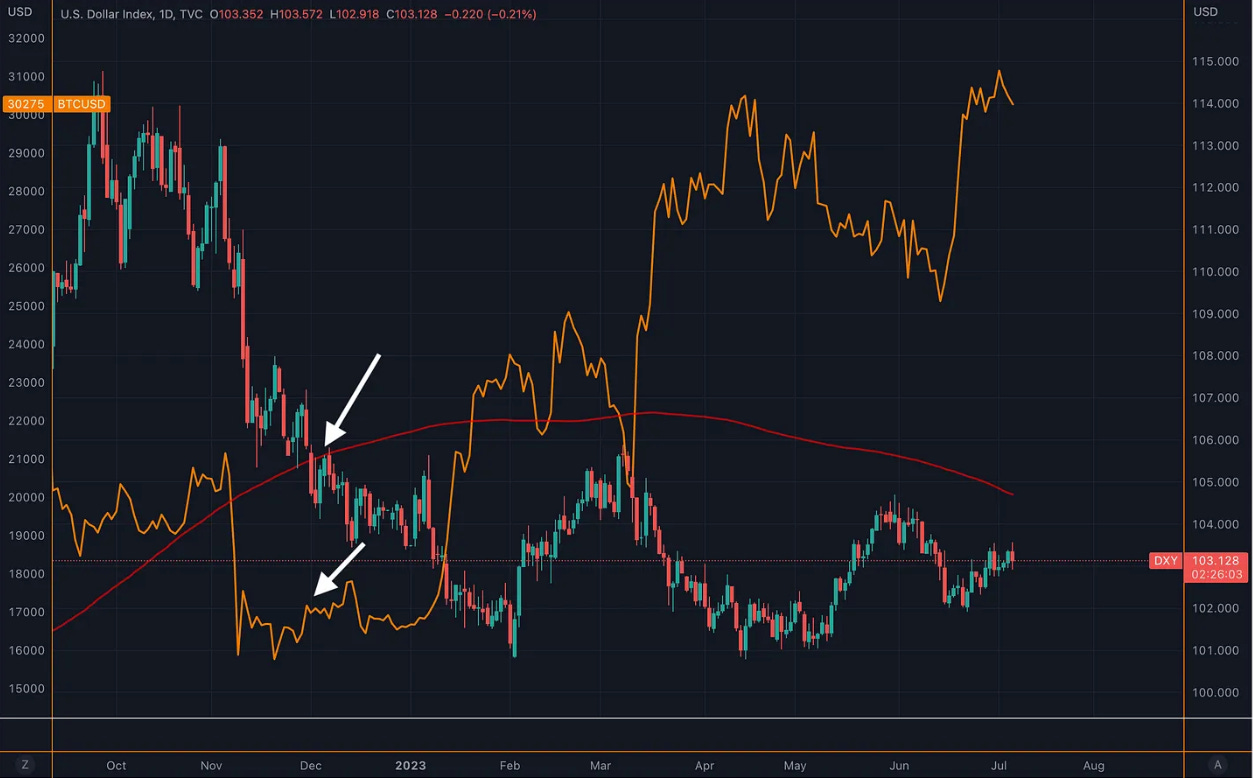Are You Prepared for the Bull?
Filtered: July 3 – July 7

Welcome to a new weekly issue we call, Filtered.
If you’ve been following Espresso regularly, you’ve likely noticed that we’re starting to ramp up our content on other platforms. So we thought we’d help our readers out by giving you some of the highlights.
You can consider this your weekly round-up of top insights from our analysts, filtered down to serve you better.
And if you’ve missed any of our content this week, whether it’s in essay, podcast, or video form, you can find links to it at the bottom.
Without further ado, let’s get into today’s Filtered.
The fuse is lit…
The spark is dancing along the ground…
And millions are holding their breath as they wait for the show to start…
This past Tuesday, the U.S. celebrated its Independence Day. Across the country, Americans gathered together and craned their necks upward to watch the brilliant fireworks that were about to be shot in the sky.
The crypto community knows the feeling as well. Although most of the time, the explosion at the end of that fuse hits more like a bomb than a firework.

Still, lately it seems like sentiment has changed, and the fireworks happening in crypto are the good kind.
Institutional investors are on their way, either through ETFs like BlackRock’s or other means. Ethereum is still seeing people line up around the block to stake their tokens. And even the SEC’s lawsuits against Coinbase and Binance are starting to feel like small potatoes.
The question is, if fireworks are on their way in crypto, how do you best prepare? That’s the question our team tackled this week.
On the latest Alpha Bites podcast, each member gave listeners a peek into how they’re viewing the market and what areas they’re eyeing in advance of the next bull run.
First up, JLabs’ resident janitor J.J. told us about one of the key signals he uses to track exactly when that bull market fuse finally reaches its ignition point.
If you’re a regular reader of Espresso, you know J.J. often compares the U.S. Dollar Index (DXY) with Bitcoin (BTC) to gauge how risk-on or risk-off the current market is, since DXY and BTC have an inverse correlation (when one goes up, the other tends to go down).
DXY is usually the more dominant force in this relationship. And to get a sense of its strength, he often looks to its 200-day moving average (MA), as he explained on this week’s episode:
When the dollar breaks down below its 200-day moving average, that's when Bitcoin becomes an enticing play, and ultimately cryptocurrencies in general.
So as we saw, the dollar broke down below its 200-day moving average in December 2022. And if you went long Bitcoin there, you would've had an average entry price of around $16,000 or so, and you would've done quite nicely just playing on that. Correlation there: When one breaks down, the other goes up, and vice versa.
And you can look at these across all different time frames. You'll see this commonly in my writings is that I'm always looking at different factors and kind of trying to project where I think the dollar could go to or what could be the implications of that for Bitcoin. And where the alpha is is obviously in anticipating these moves based on prior trends and figuring out exactly just how these moves could manifest themselves as things progress.
In the chart below, the white arrows highlight that moment in December J.J. was talking about above. Once DXY dipped below its 200-day MA (red line), that would’ve been a good entry point into BTC (orange line).

Currently, DXY is still below its 200-day MA, but as J.J. hints at above, you’ll also want to look for other factors as “confluence” to confirm a larger trend.
Meanwhile, independent analyst Ray spotlights one unique way to profit from BTC without actually buying BTC: Bitcoin mining companies. While not an analyst at JLabs, we thought the information is worth mentioning here as it’s alpha-worthy.
Mining firms have been down in the dumps for a while now. But with the introduction of BRC-20 tokens and Ordinals, they appear to be having a resurgence. According to a report from Coin Metrics, BTC miners earned $184 million in transaction fees in the second quarter, more than the past five quarters combined.
And Ray touched on other factors that make him expect mining companies to be a profitable play in the next upcycle:
Most major Bitcoin miners have restructured their debt and secured funding from the darkest days all the way to these more recently optimistic times. They are optimizing purchasing...ASIC miners and preparing for the upcoming halving.
…The growing synergy between Bitcoin miners and the big energy sector is a mutual symbiotic relationship from all strata of energy production, renewables included. Governments across the world and their energy producers and distributors are realizing linear costless revenue that can be harnessed from energy wasted during the extraction and generation process. It makes their operations more efficient, [and] it reduces their operational cost, along with other positives.
…So I’m bullish on Bitcoin mining stocks because they performed phenomenally during the previous bull run. And if you look at them now, a similar set of events appear to be gearing up, and they're preparing for another stellar run.
That said, if you’re looking to be a bit more active in DeFi during the bull, our token analyst Kodi may have an opportunity for you (of course, this should not be construed as financial advice.)
There’s no shortage of staking opportunities associated with Ethereum (and Kodi’s covered quite a few already). But he’s found another interesting protocol called Pendle Finance that enables you to “tokenize” your yield.
Here’s Kodi:
So basically you give them any token. I'm gonna go with staked ETH. But it could be any other token that has some kind of yield. And they separate it into the principal token and the yield token. So the principal token for staked ETH could be just ETH, and the yield token would be the yield that you put on a year or any given duration. And trading that allows you to have different strategies.
For instance, if you think that yield is gonna go down and...you wanna lock in these elevated yields, you can do that, and guarantee that you're gonna get the yield APY that you're seeing right now.
Or if you think that yield is gonna go up in the future, you can go long yield or buy yield tokens, so you can supercharge your yield. Or also you can just stake it in a pool. They have an AMM that is made specifically for trading that yield token and principal token.
And they have had quite a bit of success. They're sitting at $150 million TVL for now on Ethereum and Arbitrum. And they are not just an LSD solution. As I said before, any yield token can be traded with them.
Ben here: Worth noting that Pendle is opening up shop on Binance Smart Chain.
You can catch the rest of our team’s insights by listening to the full episode on YouTube here, or on Apple Podcasts or Spotify.
Finally, this week yours truly was featured in a CoinDesk article discussing how rising yields might affect crypto.
It proved to be good timing, as that same day I published my latest for Espresso discussing Jerome Powell’s endgame for this rate hiking cycle, and what else needs to happen for him to be successful.
And that meant breaking out our state-of-the-art market graphic:

If you want to read the full essay, and just what in the hell this picture has to do with Powell’s game plan, just go here.
And as always, you can find links to all the content we published this week below – along with our Tweet of the Week.
That’s all from me this week. We’ll see you again on Monday. Enjoy the weekend.
Your Pulse on Crypto,
Ben Lilly
Espresso:
Alpha Bites:
Tweet of the Week:
I’ve started sharing my new theory on why the dollar will lose value in the global financial system, using Bitcoin as a key example. Michael J. Casey, chief content office at CoinDesk, even gave it a shoutout.
I spoke about it on the most recent Alpha Bites episode, but if you’re interested in the thread version of this idea, click here or the image below.






